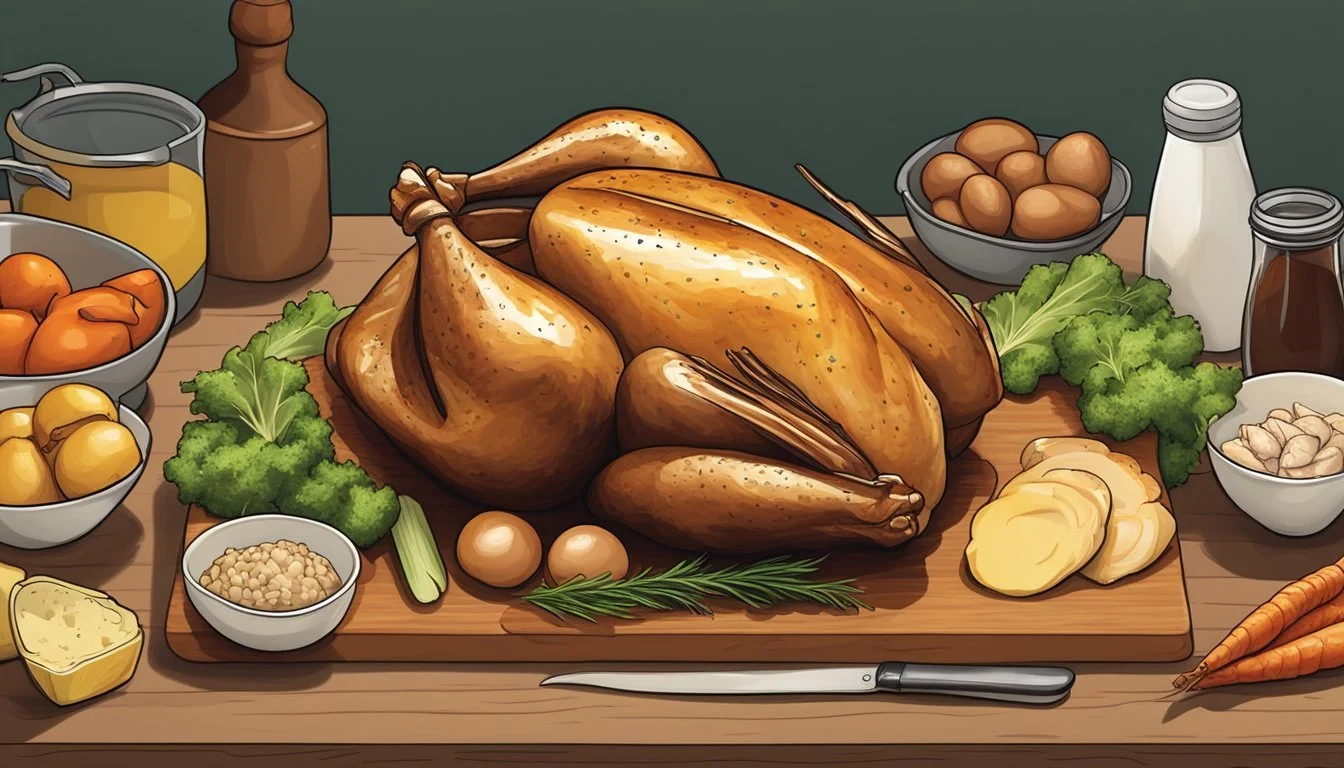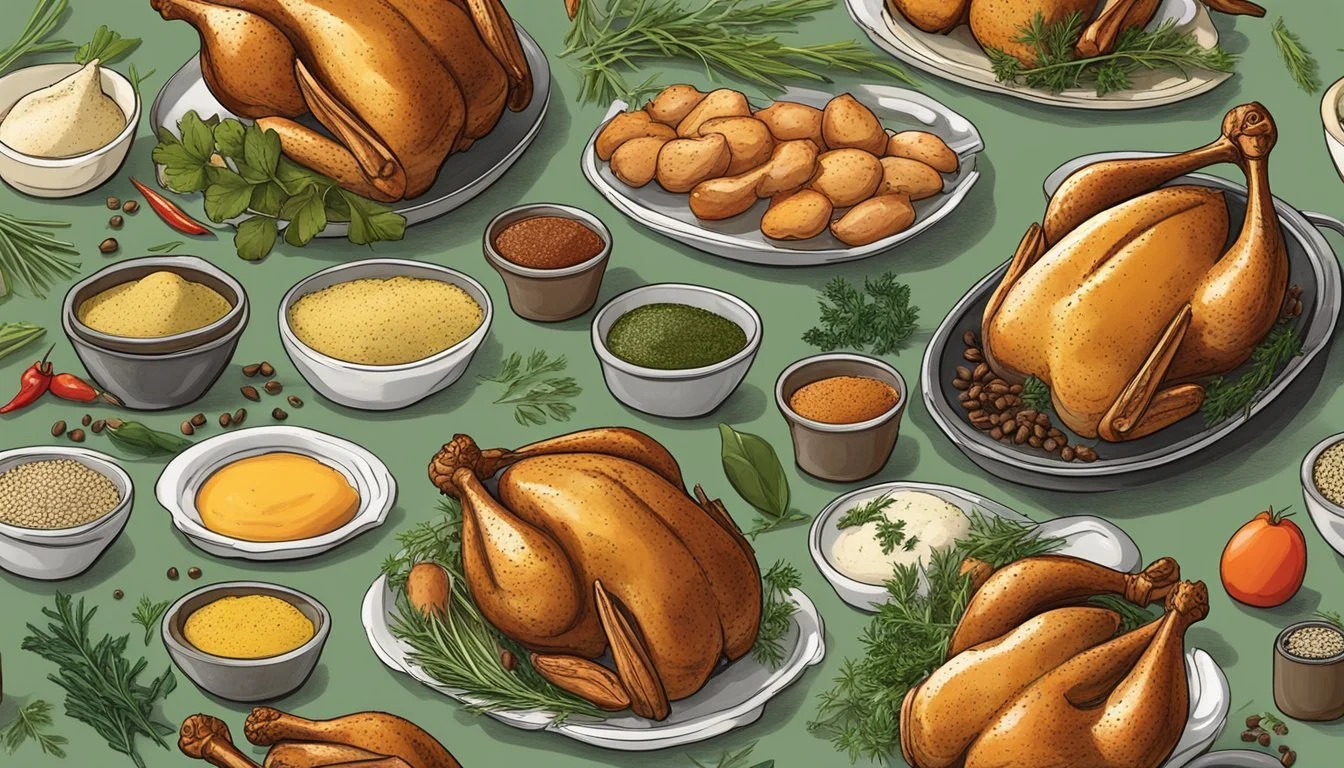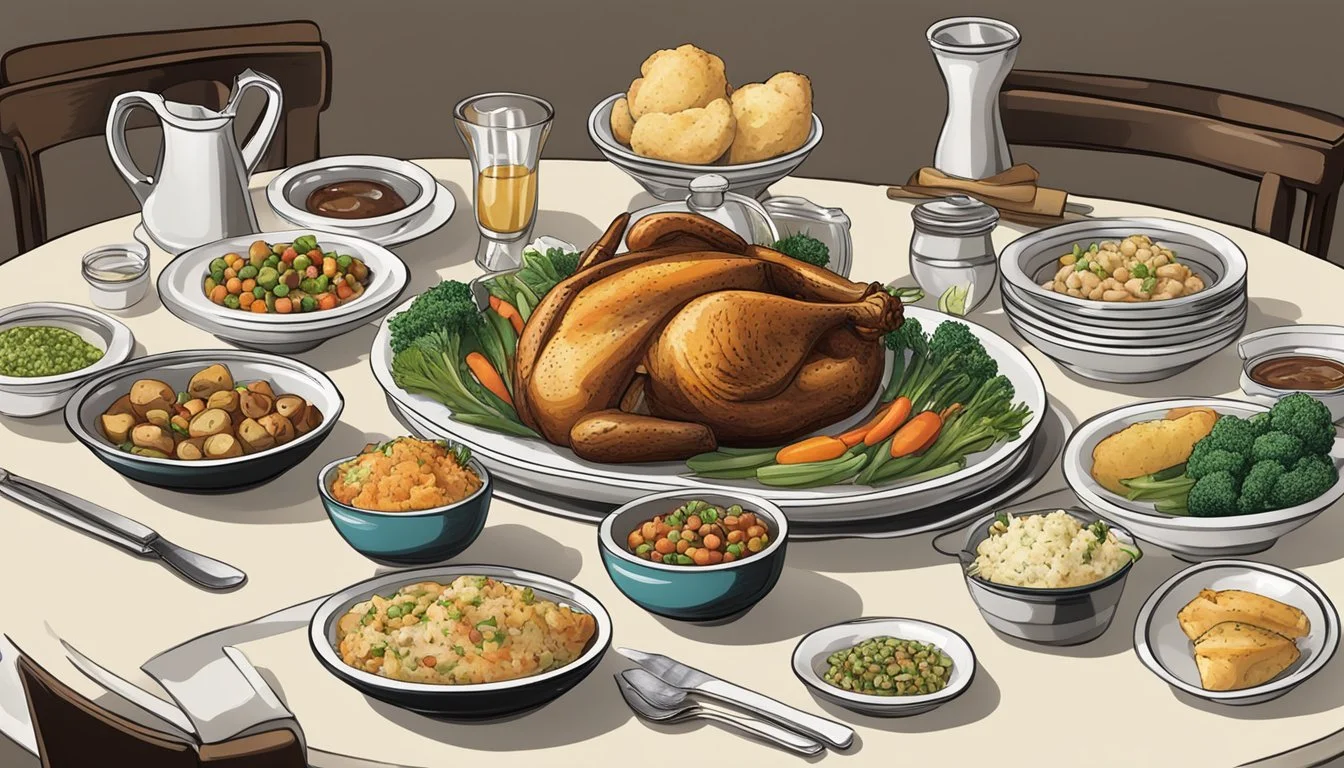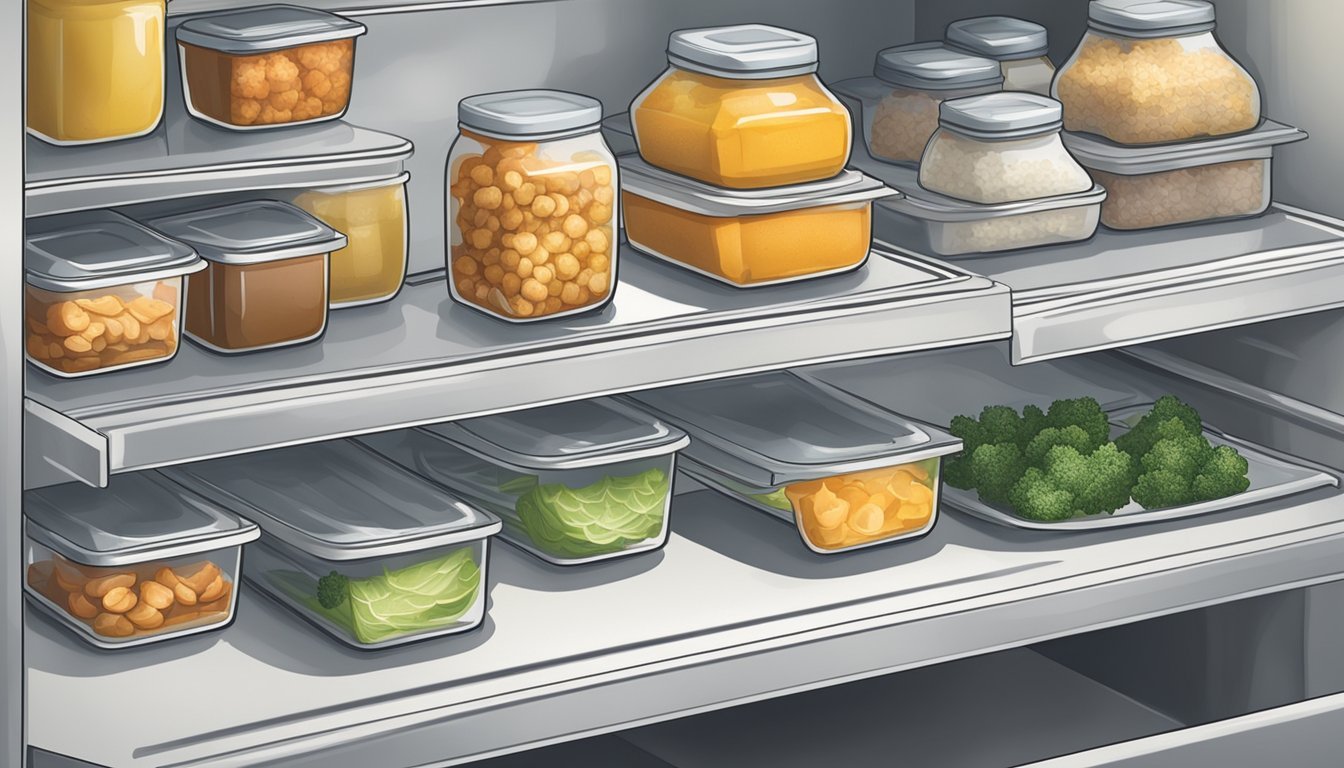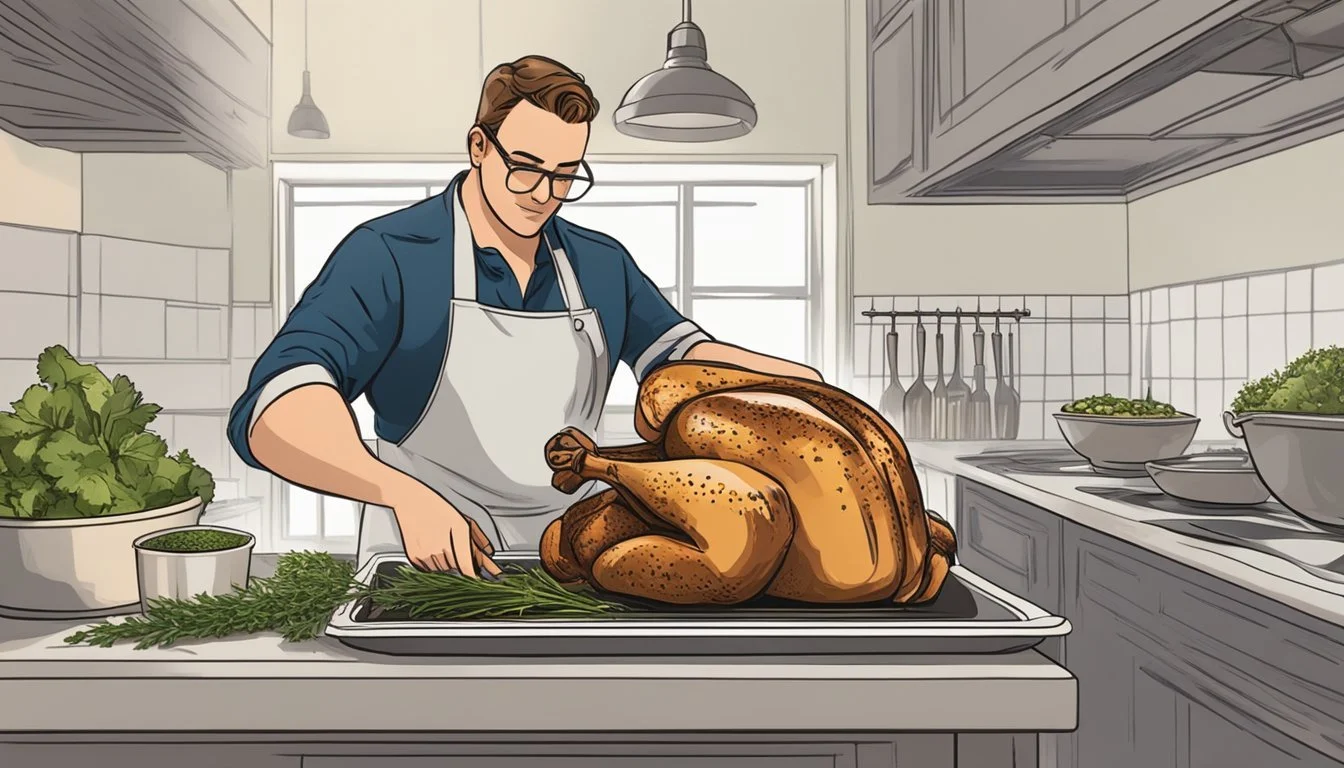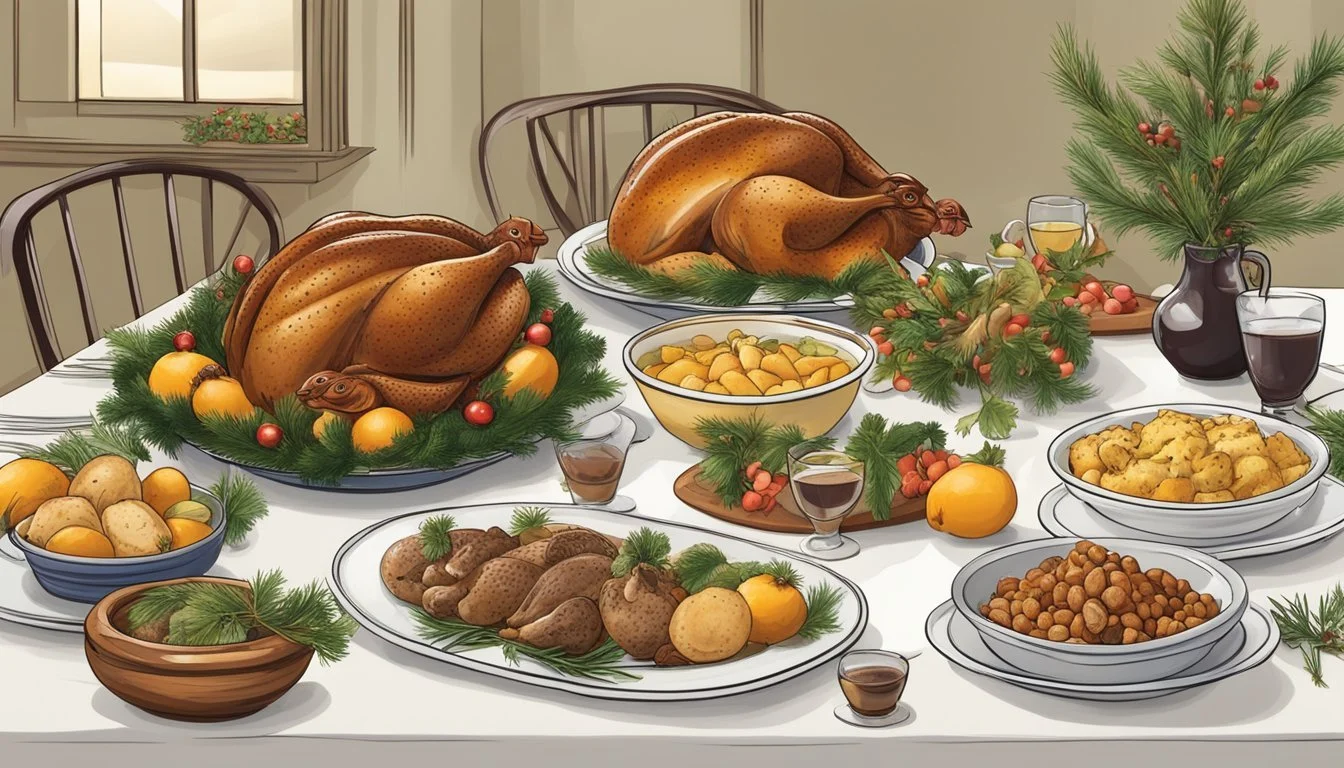Cornish Hen Substitutes
Best Alternatives for Any Recipe
For those seeking a substitute for Cornish Game Hens, there are several options available that can replicate their unique qualities. One such alternative is Guinea Fowl, which boasts a similar texture and taste, coupled with a slightly more gamey flavor that can enhance a variety of dishes. It’s also leaner, making it a healthier option while retaining the appeal of individual servings.
Other suitable substitutes include quail and squab. Quail, being smaller, offers a delicate flavor and fine texture, making it a great choice for elegant meals. Squab, or young pigeon, provides a richer taste that can elevate your culinary creations, closely mimicking the tenderness of Cornish hens.
For traditionalists, using smaller chickens such as poussins or young broilers can also work well. These birds may not have the exact flavor profile, but they are more accessible in the poultry section and can easily be prepared in similar ways.
Understanding Cornish Hens
Cornish hens are a popular choice for both their delicate flavor and versatile culinary uses. These small birds provide tender and juicy meat, making them ideal for various recipes.
Characteristics of Cornish Hens
Cornish hens, also known as Cornish game hens, are a breed of small chickens typically weighing around 1 to 2 pounds. They are known for their tender meat and juicy texture. The skin of a Cornish hen is thin and crisps up well during roasting, which enhances the flavor and presentation of the dish. These birds are often preferred for individual servings due to their size, making them suitable for elegant dinners or special occasions.
Nutritional Value
Cornish hens offer a good source of protein and essential nutrients. Per serving (approximately 3.5 ounces), they provide:
Protein: Around 20-25 grams
Calories: Approximately 140-160 calories
Fat: Roughly 6-8 grams
Vitamins and Minerals: B vitamins, iron, and zinc
Due to their lean meat, Cornish hens are considered a healthier option compared to some other poultry varieties. The lower fat content contributes to their nutritional appeal, particularly for those seeking a high-protein, low-fat meat option.
Culinary Uses
Cornish hens are highly versatile in the kitchen. They can be roasted, grilled, or cooked in an Instant Pot. Common preparation methods include:
Roasting: Ensures the skin becomes crisp while keeping the meat juicy.
Grilling: Adds a smoky flavor and offers a quick cooking time.
Instant Pot: Using pressure cooking can provide a tender and moist result in less time.
Ingredients like butter, olive oil, fresh herbs (such as rosemary, thyme), and lemon wedges are frequently used to enhance the flavor. These small chickens pair well with a variety of sides, from roasted vegetables to rice pilaf. Cornish hens are also suitable for stuffing, adding another layer of flavor and richness to the meal.
Primary Cornish Hen Substitutes
Various substitutes can replace Cornish hens in recipes, depending on your taste preferences and availability. Key options include different poultry such as chicken, game birds like quail or partridge, and other alternatives like turkey and goose.
Chicken as a Substitute
Chicken is the most common substitute for Cornish hens. Due to its availability and versatility, roasted chicken can easily replace Cornish hens in many recipes. When using chicken, adapt the cooking time as a whole chicken takes longer to roast or grill. For smaller serving portions, consider Cornish game hens' close relative: the young broiler chicken. These chickens are similarly tender and can be seasoned and cooked like Cornish hens.
Game Birds Alternatives
Game birds like quail, partridge, and guinea fowl offer distinct flavors and textures that can stand in for Cornish hens. Quail is smaller, making it ideal for individual servings, though the cooking time will be shorter. Partridge is a bit larger and also works well roasted or grilled, offering a slightly more robust flavor. Guinea fowl is leaner and provides a slightly gamey taste, adding depth to dishes without overwhelming them.
Other Poultry Options
Other options include turkey and goose. Turkey can be used when a larger serving size is needed, especially for festive meals. Turkey parts like wings or drumsticks can also be roasted or grilled as smaller portions. Goose, with its rich flavor and higher fat content, is suitable for those seeking a decadent alternative. Adjust the cooking methods slightly to avoid overcooking, as goose meat can become tough if not prepared properly.
Cooking Techniques for Substitutes
Cooking substitutes for Cornish hens involves various techniques that can bring out the best in alternative poultry like Guinea Fowl. Methods such as roasting, grilling, and slow cooking can produce tender and flavorful dishes.
Roasting and Baking
Roasting or baking Guinea Fowl is a popular method to achieve a crispy skin and moist interior. Preheat the oven to 425°F and prepare a roasting pan. Season the bird with herbs like rosemary and thyme, and use citrus fruits like lemon slices for added flavor.
Line the roasting pan with aluminum foil for easier cleanup. Baste the bird periodically to keep it moist. The bird is ready when it reaches an internal temperature of 165°F. This method infuses the meat with robust flavors while maintaining tenderness.
Grilling Alternatives
Grilling provides a smoky flavor to substitutes like Guinea Fowl. Marinate the bird in olive oil, garlic, and spices for at least 2 hours to enhance the taste. Preheat the grill to medium-high.
Place the marinated bird on the grill and cook for about 10-15 minutes per side, depending on the bird's size. Use aluminum foil to wrap parts of the bird that may cook too quickly. The grill's high heat helps to achieve a crispy exterior while keeping the meat juicy inside.
Slow Cooking Methods
Slow cooking is ideal for making the meat tender and flavorful. Season the Guinea Fowl with spices and herbs and place it in a slow cooker. Add vegetables like carrots, onions, and celery around the bird. Pour a broth or wine into the slow cooker to keep the meat moist.
Cook on low for about 6-8 hours until the bird is tender and falls off the bone. This method is perfect for busy schedules, as it requires minimal attention and effort.
Slow cooking results in exceptionally tender meat that pairs well with various side dishes.
Seasonings and Flavors
Seasoning Cornish hens or their substitutes can significantly impact the flavor profile of the dish. Understanding which herbs, spices, marinades, and sauces pair well can create a remarkable culinary experience.
Herbs and Spices
Using fresh herbs like rosemary, thyme, and parsley can elevate the taste of Cornish hens. Rosemary and thyme provide earthy, aromatic notes that complement the rich flavor of the hens. Garlic, either fresh or in powder form, offers a robust and savory depth. Black pepper and salt are essential for basic seasoning but can be adjusted to taste.
Adding lemon zest adds a citrusy brightness that can balance the richness of the meat. These components work in harmony to create a layered and well-rounded flavor profile.
Garlic powder can be used for a more intense garlic flavor if fresh garlic is not available. Pepper adds a slight heat, enhancing the overall taste.
Marinades and Sauces
Marinades play a crucial role in tenderizing the meat and infusing it with flavor. A simple marinade of olive oil, lemon juice, garlic, and white wine can create a balanced and zesty base. This mixture not only tenderizes the meat but also imparts a fresh and vibrant taste.
Gravy made from the drippings of the hens can be enriched with additional garlic, herbs, and white wine. This creates a savory sauce that pairs perfectly with the hens. Using lemon juice in the marinade adds a tangy element that enhances the overall flavor.
For those preferring a bold taste, a chunky marinade with spices like black pepper, garlic powder, and rosemary can add depth. The use of olive oil helps in ensuring that the marinade sticks well to the meat, allowing the flavors to penetrate deeply.
Accompaniments and Side Dishes
To complement the flavors of Cornish hens, consider pairing them with a variety of vegetables and starchy sides. These chosen accompaniments can enhance the meal, offering both balance and flavor dimension.
Vegetable Pairings
Vegetables such as roasted Brussels sprouts and sautéed mushrooms are excellent choices. Roasting Brussels sprouts with olive oil, salt, and pepper at high temperature yields a crispy and caramelized texture. For an added layer of flavor, consider seasoning with garlic powder or fresh thyme.
Another versatile option is sautéed mushrooms. Cook mushrooms in butter over medium heat until they release their juices, and then season with salt, pepper, and garlic. Fresh herbs like thyme can also intensify the earthy flavors, making them an ideal match for Cornish hens.
Starchy Sides
Starchy sides, including mashed potatoes and wild rice pilaf, can provide a comforting and hearty component to the meal. Mashed potatoes can be enhanced with butter, cream, and a hint of garlic for a creamy, rich texture. For a lighter alternative, mashed cauliflower is a great substitute, offering a similar consistency but with fewer calories.
Wild rice pilaf is another complementary side. The nutty taste of wild rice, combined with aromatic vegetables like onions and herbs, creates a balanced dish that pairs well with the tender meat of Cornish hens. Consider adding toasted nuts or dried fruits to enhance both texture and flavor.
Proper Storage and Leftovers
Cornish hens, whether cooked or raw, require specific storage conditions to maintain their quality and safety. Correct refrigeration, freezing methods, and reheating techniques are essential to enjoy your Cornish hen leftovers.
Refrigeration and Freezing
Refrigerate Cornish hen leftovers within two hours of cooking. Place the leftovers in airtight containers or wrap them tightly with aluminum foil or plastic wrap. Properly stored, cooked Cornish hens will last for 3-4 days in the refrigerator.
For longer storage, freezing is an effective option. Wrap the hens in plastic wrap, then place them in heavy-duty freezer bags or airtight containers. Label the packaging with the date. Frozen cooked Cornish hens can last up to 4 months without significant loss of quality.
Reheating Techniques
To reheat in the oven, preheat to 350°F (175°C). Place the hens on a baking sheet or in an oven-safe dish. Cover loosely with aluminum foil to prevent drying out, and heat for approximately 20 minutes or until the internal temperature reaches 165°F (74°C).
For quicker reheating, use a microwave. Place the hens on a microwave-safe plate, cover them loosely with microwave-safe plastic wrap or a microwave cover, and heat in short intervals, checking frequently until they reach the desired temperature. Ensure the internal temperature is 165°F (74°C).
Use gentle heating methods to avoid drying out or overcooking the meat. Proper reheating not only ensures safety but also preserves the flavor and texture of your Cornish hen recipes.
Dietary Considerations
When selecting substitutes for Cornish hens, dietary needs such as gluten-free, dairy-free, low-carb, and keto-friendly options are important. Below are considerations for these specific dietary requirements.
Gluten-Free and Dairy-Free Options
For those needing gluten-free and dairy-free alternatives, duck is a prime choice. Both duck and Cornish hens are small, protein-rich birds that can be roasted whole. Duck provides tender and flavorful meat, making it suitable for special occasions or fancy dinners. Avocado oil, an excellent dairy-free cooking oil, can enhance duck's richness without adding dairy.
Vegetables like roasted cauliflower can accompany the main dish, providing a gluten-free side. These vegetables maintain the meal's balance and complement the flavors of the duck without any gluten or dairy.
Low-Carb and Keto-Friendly Choices
For low-carb and keto-friendly substitutes, quail is an excellent option. Both quail and Cornish hens are lean protein sources ideal for ketogenic diets. Quail delivers similar nutritional benefits with lower fat content. Cooking quail with olive oil or avocado oil ensures the dish remains within low-carb guidelines.
Including leafy greens or steamed broccoli as side dishes can complete the meal while adhering to keto principles. These vegetables are low in carbs and add essential fiber and nutrients, making them perfect companions for quail.
Choosing these substitutes ensures that meals are both satisfying and compliant with specific dietary restrictions.
Preparation and Cooking Tips
Here are essential tips to ensure success when preparing and cooking Cornish hens, such as selecting quality meat, perfecting cutting techniques, and understanding the right cooking duration and temperature.
Selecting Meat Quality
Choosing high-quality Cornish hens is crucial. Opt for fresh poultry in the meat section of well-reputed stores. Inspect the meat for firmness and a pink, slightly translucent appearance. Avoid hens with discolored spots or an off-smell.
Seek out trusted brands, and consider organic or free-range options for better flavor and health benefits. Fresh herbs can be added for enhanced freshness and aroma.
Cutting and Trimming Techniques
Using a sharp knife or kitchen shears, cut along the backbone to spatchcock the hen for even cooking. Trim excess fat and any remaining pin feathers. This method not only results in a shorter cooking time but also helps achieve crispy skin.
Additionally, trimming helps in presenting a more appealing final dish. Use care to avoid accidentally cutting through the breastbone.
Cooking Duration and Temperature
Preheat the oven to 425°F (218°C) for optimal results. Place the hens breast-side up on a roasting rack within the roasting pan.
Cook until a meat thermometer, inserted into the thickest part of the breast, reads 165°F (74°C), which typically takes about 25-30 minutes. This ensures the meat is thoroughly cooked yet tender. Let the hens rest for 10 minutes before serving.
Utilizing a thermometer guarantees accuracy and maintains the desired juicy texture.
Holiday Considerations
Cornish hens offer a versatile and elegant alternative for holiday meals. They are perfect for both traditional Thanksgiving dinners and sophisticated small gatherings.
Cornish Hen for Thanksgiving
For Thanksgiving, Cornish hens provide a unique twist to the usual turkey. These smaller birds allow for individualized servings, making presentation easy and special for each guest. Preparing Cornish hens with herbs, lemon wedges, and a flavorful balsamic apricot glaze can enhance the festive atmosphere.
One can cook the hens at a moderate temperature of 375°F for about 45-50 minutes, ensuring an internal temperature of 180°F. By using a mixture of polenta, sautéed vegetables, and eggs for stuffing, one can create a rich and comforting dish. These hens not only save oven space but also cook faster than a traditional turkey, ideal for those seeking efficiency without sacrificing taste.
Elegant Small Gatherings
Cornish hens are an excellent choice for intimate dinner parties or holiday gatherings. Their smaller size and individual servings create a sophisticated dining experience. When roasted with herbs like rosemary, tarragon, and thyme, and accompanied by vegetables such as carrots, onions, and potatoes, they create a visually appealing and delicious meal.
The preparation involves tying the drumsticks together and stuffing the cavity with lemon wedges for added flavor. A truffle herb butter can be applied for an extra touch of luxury. These details contribute to an elegant and memorable dining event, perfect for impressing guests in a cozy and intimate setting.


